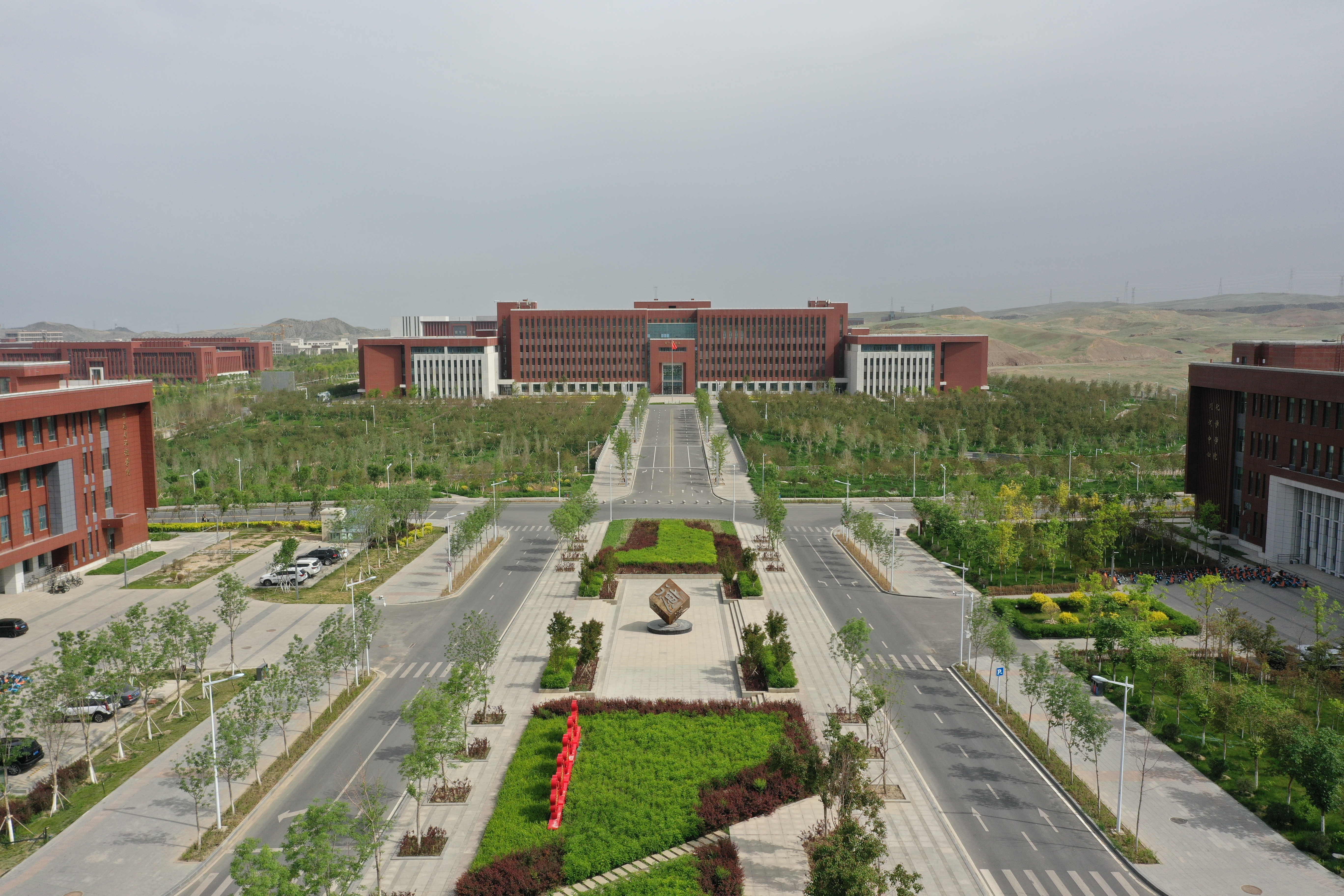郭长艳副教授项目简介
一、项目名称
缺陷金属/金属硫化物/金属有机骨架材料基双功能催化剂的制备及其可见光催化产氢性能研究(2022E01025)
Synthesis of defect-engineered metal/metal sulfide/metal-organic framework-based bifunctional catalysts and investigation of their visible light-driven catalytic hydrogen production performance
二、项目简介
新疆大学郭长艳副教授与巴基斯坦拉合尔明哈吉大学代理院长Naeem Akram团队开展长期合作研究,并于2022年获批“自治区上海合作组织科技伙伴计划及国际科技合作计划”。项目主要针对目前中巴共同面临的化石资源消耗过度、能源短缺、环境污染等问题,围绕高效光催化剂的构筑、新催化体系的开发、绿色氢能源的制备等开展国际合作研究。从影响光催化产氢性能的关键因素入手,通过与理论计算相结合,合理设计并制备新型高效光催化材料,在纯水体系下实现光催化高效产氢。重点研发环境友好的绿色清洁能源催化体系,建成一个支国际先进的光催化制备氢能源研究团队,为上合组织成员国培养更多的化工人才。同时,深上合组织国家之间的科技合作与交流,也为新疆化工企业提供重要的国际高水平技术支持。目前,已通过国际合作开展相关研究工作,设计开发了一种光催化纯水分解产氢的绿色催化体系,并设计合成了三种高效光催化水分解催化剂。该催化体系只需在光照、催化剂的作用下即可实现水的全分解产氢,无需光敏剂、空穴牺牲剂及其它成分的添加。相关成果以论文形式呈现,在Nanoscale,International Journal of Hydrogen Energy以及Journal of Physics and Chemistry of Solids合作发表SCI论文5篇。
The Xinjiang University has established a long-term collaborative research partnership with Naeem Akram's team, led by the Acting Dean of Minhaj University Lahore in Pakistan. They have been granted approval for the "Autonomous Region Shanghai Cooperation Organization Science and Technology Partnership Program and International Science and Technology Cooperation Program" in 2022. The collaborative international research is exploring the development of efficient photocatalysts, novel catalytic systems, and environmentally friendly hydrogen energy to address China and Pakistan's pressing issues of excessive fossil resource consumption, energy scarcity, and environmental pollution. Based on the key factors affecting the performance of photocatalytic hydrogen production, a new type of highly efficient photocatalytic material was designed and prepared by combining with theoretical calculation, and the photocatalytic hydrogen production was realized in pure water system. We will prioritize the development of environmentally sustainable green and clean energy catalytic systems, establish an internationally renowned research team specializing in photocatalytic hydrogen energy production, and foster the cultivation of chemical talents for SCO member states. In the meantime, to enhance scientific and technological collaboration and exchanges among SCO member states, it will also offer crucial international high-level technical assistance for chemical enterprises in Xinjiang. Currently, extensive research efforts have been undertaken through international collaborations, resulting in the development of a green catalytic system for photocatalytic water splitting to generate hydrogen from pure water. Additionally, three highly efficient photocatalysts have been synthesized for water splitting, achieving complete decomposition of water into hydrogen without the need for photosensitizers, sacrificial hole scavengers or other additives. The notable achievement includes publishing five papers in prestigious journals like Nanoscale, International Journal of Hydrogen Energy, and Journal of Physics and Chemistry of Solids.
三、项目创新及成果
主要成果举例如下:
1. Precise regulation of defect concentration in MOF and its influence on photocatalytic overall water splitting. Nanoscale, 2022, 14, 15316.
https://pubs.rsc.org/en/content/articlelanding/2022/nr/d2nr03602a
本文通过引入不同pKa值的缺陷连接剂,设计并合成了具有不同缺陷浓度和Cu1+/Cu2+配位不饱和位点(CUS)含量的缺陷Cu-BDC。金属有机骨架(MOF)结构中的低浓度缺陷作为活性位点,增强了其光催化活性。相反,高浓度缺陷作为光生电子和空穴的复合中心,可降低载流子的转移效率。由于缺陷浓度适中,Cu-BDC-FBA具有良好的双功能光催化性能,产氧速率为3114 μmol g−1 h−1,产氢速率为16 829 g−1 h−1。本研究能够加深对缺陷和光催化活性之间关系的认识,为设计和合成性能优异的缺陷MOF光催化剂提供新的思路。
In this work, the defective Cu-BDC with different defect concentration and Cu1+/Cu2+ coordinatively unsaturated sites (CUS) content were designed and synthesized by introducing defective linkers with different pKa values. The low-concentration defects in Metal–organic frameworks (MOFs) structure act as the active sites to enhance their photocatalytic activity. In contrast, the high concentration defects serve as the recombination centers of photogenerated electrons and holes to decrease the transfer efficiency of charge carriers. Cu-BDC-FBA shows an excellent bifunctional photocatalytic performance for overall water splitting due to the suitable defect concentration, which gives an oxygen production rate of 3114 μmol g−1 h−1 and hydrogen production rate of 16 829 μmol g−1 h−1, respectively. It is expected that this study can deepen the understanding of the relationship between defects and photocatalytic activity, and provide a new idea for the design and synthesis of defective MOFs photocatalysts with excellent performance.
2. Effect of different CdS morphologies on photocatalytic water splitting performance of CdS@ZIF-67 composites. International Journal of Hydrogen Energy 48 (2023) 22021-22031.
https://linkinghub.elsevier.com/retrieve/pii/S0360319923011825
ZIF-67在光催化领域得到了广泛的应用,但其对可见光响应性的不敏感成为其进一步发展的主要难点。研究表明,硫化镉(CdS)与ZIF-67的结合有望解决这一问题,但CdS的不同形态和尺寸对复合材料的性能影响较大。因此,本研究重点探究了四种不同形态的CdS与ZIF-67结合得到的CdS@ZIF-67复合材料的理化性质、光电性质和光催化水分解性能。结果发现,CdS@ZIF-67复合材料在不使用光敏剂的情况下具有可见光区响应性能,且比表面积明显提高。其中,CdS@ZIF-67纳米粒子对光催化水分解性能的改善最为显著,其最优值可达2.21 mmol g−1 h−1。基于本研究结果,可以得出CdS的零维结构更有利于复合材料性能的提升,为后续半导体材料与金属有机框架材料(MOF)的结合提供了有利证据。
ZIF-67 has been widely used in the field of photocatalytic, however, its insensitivity to visible light responsiveness has become a major difficulty in its further development. Studies have shown that the combination of cadmium sulfide (CdS) with ZIF-67 has enough potential to address this concern, but different morphologies and sizes of CdS have a great influence on the properties of composite materials. Therefore, this study focused on the physicochemical properties, photoelectric properties, and photocatalytic water-splitting properties of the CdS@ZIF-67 composites obtained by the combination of four different CdS morphologies and ZIF-67. It was found that the CdS@ZIF-67 composites had the performance of visible light region response without the use of photosensitizer, and the specific surface area of the composite was significantly improved. Among them, the nanoparticles CdS@ZIF-67 showed the most significant improvement in photocatalytic water splitting performance, and the optimal value reached 2.21 mmol g−1 h−1. Based on the results of this study, it can be concluded that the zero-dimensional structure of CdS is more conducive to the performance improvement of composite materials, which provides favorable evidence for the later combination of semiconductor materials and metalorganic framework materials (MOFs).
3. Preparation strategy of bimetallic MOF hollow photocatalysts for hydrogen evolution, International Journal of Hydrogen Energy 51 (2024) 950-961.
https://www.sciencedirect.com/science/article/pii/S0360319923046281?via%3Dihub
空心结构材料具有分离电子-空穴对的优势,是一种优良的光催化剂。然而,这种材料的合成相对复杂、耗时且通用性差。在本研究中,采用简单的一步蚀刻和配体交换策略,设计并合成了含有Co和Cu的双金属Cu-DHTP/ZIF-67 (DHTP=2,5-二羟基对苯二甲酸)空心材料。值得注意的是,双金属空心催化剂在室温下,在Cu(II)和DHTP同时存在的情况下,可以在5min内合成。所合成空心双金属催化剂具有较好的光响应性能和电子空穴对分离能力,与DHTP/ZIF-67、Cu/ZIF-67、ZIF-67相比,在光催化裂解水反应中表现出最好的催化性能。Cu-DHTP/ZIF-67的析氢率可达39.7 mmol g−1 h−1,是纯ZIF-67的6倍。本研究证明了Cu-DHTP/ZIF-67光催化剂在光催化水还原和析氢领域具有广阔的应用前景,拓宽了催化体系的可见光吸收范围和吸收强度。与单一的ZIF-67催化剂相比,所制备的复合光催化剂由于双金属之间良好的协同作用、特殊的空心十二面体结构以及光生电子-空穴对有效的分离和转移能力,表现出优异的光催化析氢性能。
Hollow structure materials have been proved to be excellent photocatalysts due to their advantages in the separation of electron-hole pairs. However, the synthesis of such materials is complex, time-consuming, and poor versatility. In this study, Cu-DHTP/ZIF-67 (DHTP: 2,5-dihydroxyterephthalic acid) hollow materials containing both Co and Cu were designed and synthesized by a simple one-step etching and ligand exchange strategy. It is worth noting that the bimetallic hollow catalyst can be synthesized in the presence of both Cu(II) and DHTP within 5min at room temperature. The synthesized hollow bimetallic catalyst has improved photoresponse performance and electron-hole pair separation ability, which results in the best catalytic performance compared with DHTP/ZIF-67, Cu/ZIF-67, and ZIF-67 when used in the photocatalytic water splitting reaction. The hydrogen evolution yield of Cu-DHTP/ZIF-67 can reach 39.7 mmol g−1 h−1, which is 6 times than that of pure ZIF-67. This study demonstrates the promising potential of Cu-DHTP/ZIF-67 photocatalyst in the field of photocatalytic water reduction and hydrogen evolution, and a photosensitizer, which broadens the visible light absorption range and absorption intensity of the catalytic system. Compared with the single ZIF-67 catalyst, the prepared composite photocatalyst showed excellent photocatalytic hydrogen evolution performance due to the good synergistic effect between bimetals, the special hollow dodecahedral structure and the effective separation and transfer ability for photogenerated electron-hole pairs.
